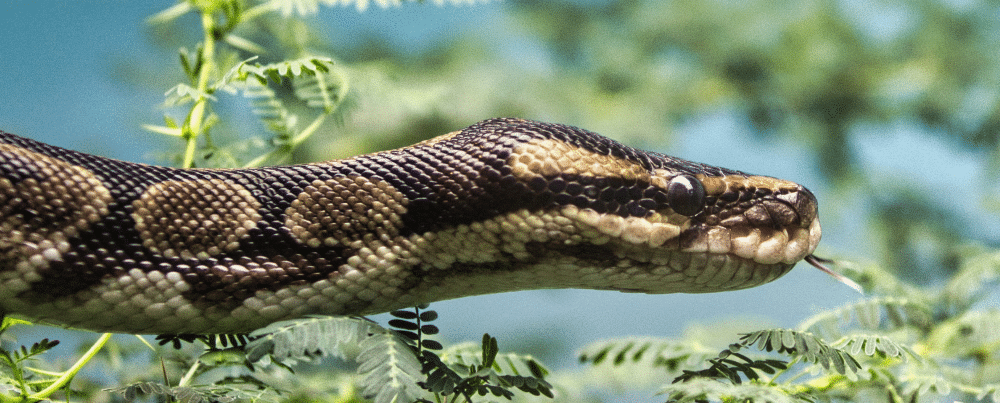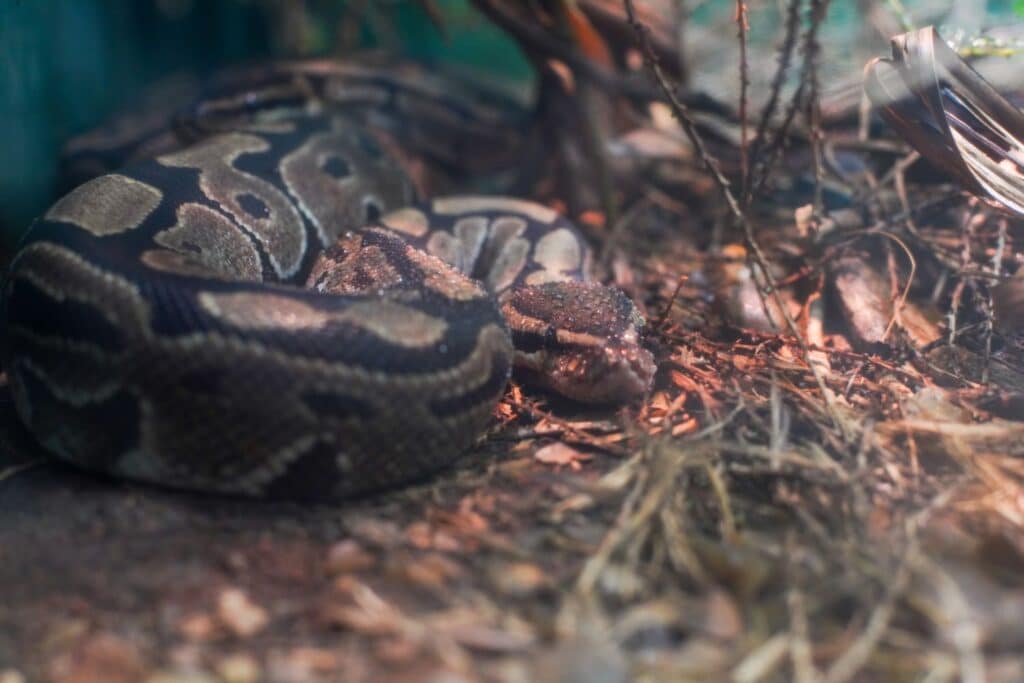How new research is helping understand the secret lives of snakes
October 21, 2025
October 21, 2025

For many years, snakes have proven an especially tricky group to understand, reptile behaviours are often subtle and difficult to detect which leads to them being misjudged. However, exciting new research is proving that snakes are far more fascinating than we once believed!
We caught up with Dan Garrick, Team Leader of Birds, Lower Vertebrates & Invertebrates to explore how this research is helping us better understand the royal python here at Marwell Zoo.
Scientific studies reveal that snakes have a wide range of complex behaviours. Many species are now understood to have intricate social behaviours, that include living in groups, sharing resources, caring for their young and they can even recognise family members.
Snakes often communicate through touch and by using their incredible sense of taste and smell (chemosensory aspects) which can be easy to miss. So, it is not surprising that we have been slow to understand snake behaviour.
There was previously a longstanding belief that snakes are simple animals who only require simplistic surroundings to thrive but by observing snakes in zoos and in the wild, scientists have discovered snakes are much more active and curious.
Snakes travel large distances through complex environments, some will defend their territories, and some will even explore new objects just because they’re curious.

The royal python is one of the most well-known snake species, yet much of what is known we know about them has been learned from individuals under human care. As a result, various beliefs and assumptions about their welfare have developed over time.
In the wild, royal pythons are found across a vast range of habitats stretching from western to eastern Africa. Although field studies are limited, research shows that they inhabit diverse environments, from grasslands and forests to agricultural areas. So, when the Lower Vertebrate & Invertebrate team here at Marwell set out to design the royal python habitat, they asked themselves ‘How can knowledge of their natural habitats help us provide the best possible care for our animals?
When we design homes for any of our animals here at Marwell, we look at factors such as how strong the sunlight is (solar irradiance), temperature, how strong the sun’s invisible rays are (ultraviolet light index), the hours of daylight and the humidity across the seasons in the wild. All this data helps us decide which technologies to use.
It’s vital our animals have a large enough space to move, climb, rest and socialise. A larger space not only allows movement but offers choices between warmer and cooler areas, brighter and dimmer spaces and drier or more humid zones, including a large pool where they can fully submerge if they wish.
The floor is made up of deep soil and leaf litter base. This offers opportunities for small invertebrates to live alongside the snakes and help keep the habitat clean by eating any present organic matter – just like in the wild.
Even the plants have been selected based on where they occur in the wild, matching regions of Africa where royal pythons live.
Fortunately, growing research into royal pythons shows that, this species is much more socially complex than previously thought. This corroborates what we see within our group at Marwell. This is only possible because their habitat has been designed to be multilayered and large enough to accommodate a social group of six pythons.
The pythons have lived in their habitat in Cold Blooded Corner for several years now. During this time, Animal, Veterinary and Behavioural Teams have come to see this ‘well-known’ species in a totally different light. By closely observing our animals, we can ensure they continue to thrive, find new ways to enhance their wellbeing and anticipate their needs before any changes occur.